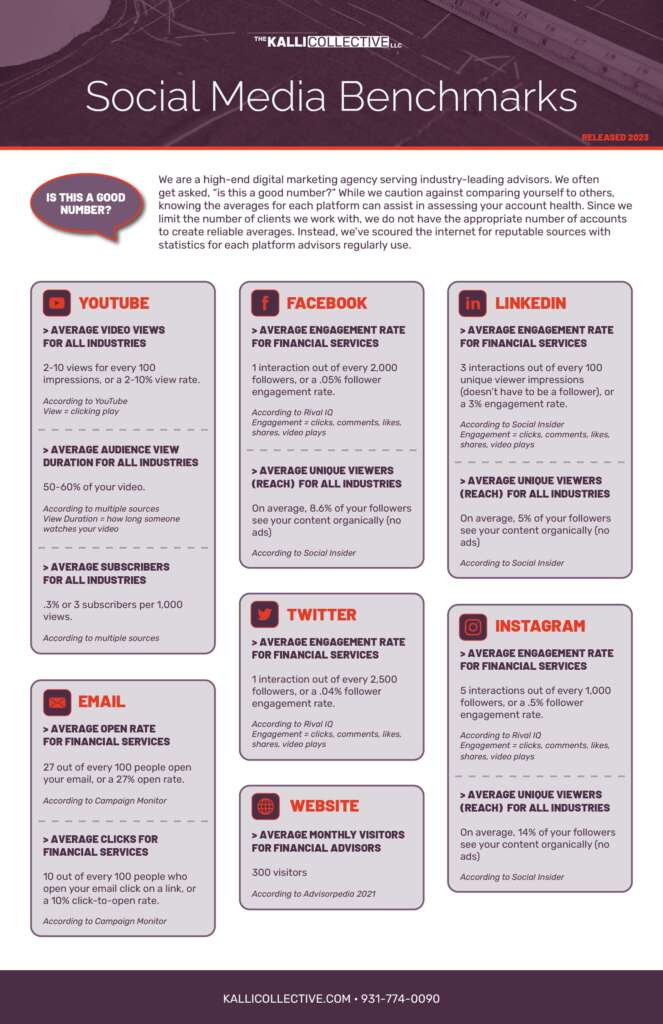Facebook
Facebook remains one of the most popular social media platforms. It continues to thrive as a place to connect with your audience, especially the Baby Boomer generation (ages 58-76). Facebook has the highest rate for reach, second to Instagram. However, Facebook has a very low engagement rate. This rate is measured by the percent of your audience that engages with your content (versus what percent of unique viewers). The larger your followers grow, the lower the average engagement rate.
INSTAGRAM
Known for its beautiful aesthetics and video content, Instagram is a terrific platform, especially when interacting with millennials (ages 26-41). Instagram touts the highest reach rate, meaning more of your followers will see your content compared to other platforms.
LINKEDIN
Known as the "professional" platform, LinkedIn is fantastic for reaching small business owners, B2B companies, and companies within specific industries.
TWITTER
A platform where opinions fly, Twitter continues to feature relevant content in shorter, bite-sized tweets. We tend to recommend the other platforms over Twitter for advisors based on the pop culture reactive nature of Twitter going against the principles of financial advice like "don't time the market" or "don't let emotions make your decisions."
YOUTUBE
Lights, camera, action! YouTube offers a platform to get up close and personal with your audience. As the second largest search engine, your content on YouTube has the longest shelf life of all the platforms sans your website. You may be surprised to see a video from years ago suddenly receive attention. Educational videos on specific subjects seem to be the best strategy for reaching new viewers on YouTube. Personal, fun videos are relevant only to an audience that already knows you. These videos are best hosted on YouTube and shared with your clients but will not garner new viewers from YouTube searches like educational topics will.
EMAIL
Email marketing remains one of the best marketing tools on the internet if used properly. Email allows you to personalize your message and follow up with your audience. We strongly recommend growing an engaged email audience and sending messages that are relevant to the recipients.
WEBSITE
Your website is the one place you can control every piece of your audience's experience. No ads or content are competing for attention. Just like your email, we strongly recommend creating a website with information relevant to the user.





